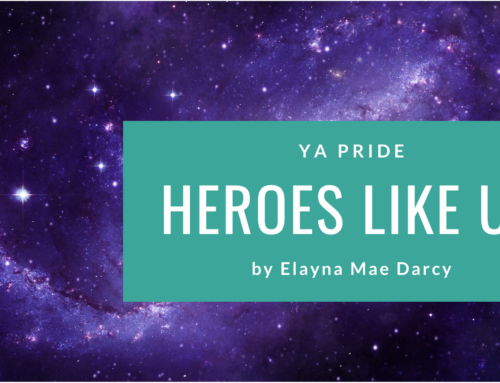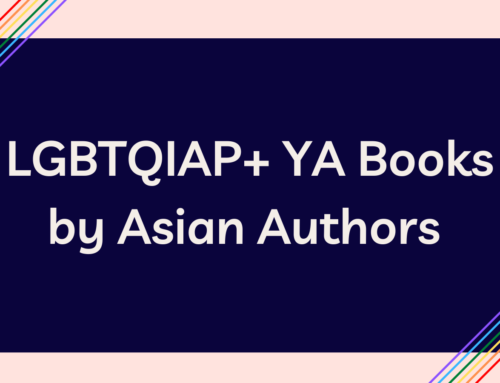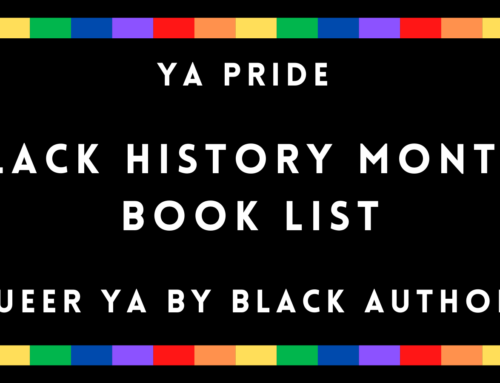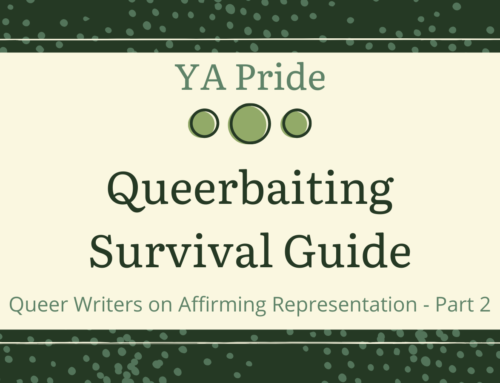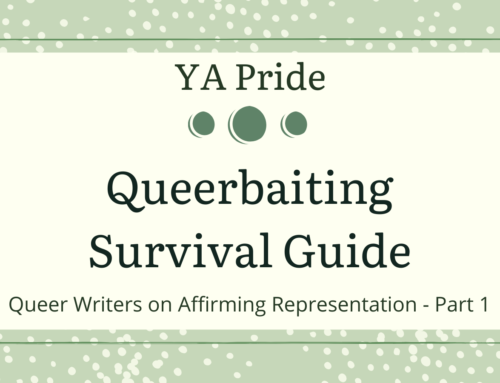The first gay YA I picked up, in early 2009, was David Levithan’s short story collection How They Met, and Other Stories, recommended to me by someone on tumblr. The first story in the collection, “Starbucks Boy”, radically changed the way I thought about myself. My interest in guys, to that point, had been mostly theoretical. I knew I liked them, theoretically and I knew there were some attractive ones at school with me, but only towards the end of 2008 did the idea of actually, you know, dating one of them start to seem even a little bit real, and not until I turned the last page of “Starbucks Boy” did it really hit me that this wasn’t just real for other people — it was something it wasn’t unreasonable for me to want for myself.
I devoured everything else I could find by David Levithan — the rest of How They Met, The Realm of Possibility, Boy Meets Boy, Nick & Norah’s Infinite Playlist, Naomi & Ely’s No Kiss List, even the disappointingly straight Are We There Yet?. I got my hands on a used copy of Am I Blue? the anthology of LGBTQ short fiction edited by Bruce Coville in the mid-90s (I owe my 10th grade English teacher thanks for having us read a few stories from it). Then I foundered, until the fall of 2010, as a college freshman, when a friend of mine and I decided to co-teach a class on LGBTQ Young Adult Fiction at MIT’s Splash program. As soon as I submitted the course description, I realized I couldn’t go into it with only one author under my belt, so I set out to find more. Since 2010, I’ve kept track of every new book I finished, and at the end of 2014, with five years of LGBTQ YA reading behind me, this seems a good time to look back on what I found.
Probably the most frustrating thing I’ve learned has been that not all LGBTQ YA is created equal. My early exposure to David Levithan gave me high expectations that not everything has been able to meet. This is both unfortunate, in that obviously I’d love it if all LGBTQ YA were as beautifully written as, say, Two Boys Kissing, and, I think, important for us to keep in mind as we talk about LGBTQ YA in general. In her article “The Politics of Translation”, Gayatri Chakravorty Spivak notes that not all “Third World women’s writing” is automatically revolutionary (or even just plain good), even if it may appear so to Western eyes. By the same token, though we might wish otherwise, not all LGBTQ YA is automatically empowering or thought-provoking or even especially good. I’ve read some mediocre books these last few years, although the excellent books have (happily) outnumbered them.
First there are books like Lauren Myracle’s Shine. I think of these as “hate crime books”, books where LGBTQ characters are (at best) secondary, existing to teach the main characters a lesson in tolerance, or (at worst) dead. Shine was a powerful book in some ways (its treatment of the main narrator’s struggle as an abuse survivor), but as far as LGBTQ YA goes — count me out.
Then there are books that do a fair job representing one group while throwing another under the bus. The Difference Between You and Me’s (Madeleine George) handling of Emily’s sexuality comes to mind, as does I Am J’s (Chris Beam) main character, who (to my cis eyes) seems to be a sensitive portrayal of a trans guy, except that he uncritically adopts straight men’s misogyny and homophobia, which rather soured the book for me.
Finally, there are books that just…fall short, one way or another. Brian Sloane’s Tale of Two Summers ended up in this category, for me, by having the straight protagonist end the book in a happy relationship while the gay protagonist is left in the lurch. I’m done being the gay best friend.
For every book that disappointed me, though, there were many others that didn’t (two, Tom Lennon’s When Love Comes to Town and Bill Konigsberg’s Openly Straight, will have to wait for their own blog posts, but I thought I’d mention them here; two others, Scott Tracey’s Witch Eyes series and Deborah Hautzig’s Hey, Dollface, I’ve already talked about). I’ve read some amazing books these last five years, books that six years ago I could barely imagine existing (even those that already existed): Ash (Malinda Lo — honestly, all of Malinda Lo’s books), Aristotle and Dante Discover the Secrets of the Universe (Benjamin Alire Sáenz), Empress of the World (Sara Ryan), and others.
My reading has ranged from 1978 (Hey, Dollface, one of the earliest LGBTQ YA novels) up through 2014. Reading older books —even just from the early 2000s — has been eye-opening. On the one hand, a lot has changed, just in terms of what stories are being told. While non-straight characters (of variable representational value) have been appearing in genre fiction for decades, ten or fifteen years ago there wasn’t space in YA for a book like Ash or Witch Eyes or even the relatively incidental (but still very important) representation that shows up in Rick Riordan’s The House of Hades. There’s still space for the kinds of stories Geography Club (Brent Hartinger), Empress of the World, and Totally Joe (James Howe) tell — as long as there are young people questioning their sexualities and struggling to navigate the complexities of adolescence at the same time, these are stories that need to be told.
But there’s also, increasingly, room for other stories: stories like Adaptation and Inheritance (Malinda Lo), stories like The Summer Prince (Alaya Dawn Johnson), stories like Pantomime (Laura Lam) — books that are fundamentally different from the kind of stories we used to get. And we are richer for it: the more different kinds of books LGBTQ characters can exist in, the more of our stories can be told, and the more we’ll be able to see ourselves not as “themes” or “issues” but as people with valid, important, and (this is key) varied desires and experiences.
On that note, here’s to another five years of excellent LGBTQ YA.
—
Nathaniel Harrington was born and raised in suburbs of Boston, studied (comparative) literature in college, and is currently improving his Gaelic on the Isle of Skye. He has been writing gay YA since 2008 and reading it since 2009; someday he hopes to be able to share it with others in a format that isn’t half-finished NaNoWriMo first drafts and miscellaneous fragments. He enjoys working out the details of magic systems, doing citations for academic papers, reading in several languages (although he has yet to read any LGBTQ YA in a language other than English; suggestions are welcome), and obsessively categorizing books he reads on Goodreads.



